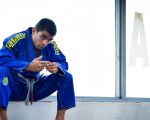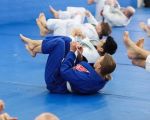Brazilian Jiu-Jitsu Rolling Drills for Beginners
- 1. Importance of Rolling in BJJ
- 2. Fundamental Rolling Drills for Beginners
- 3. Partner Drills to Improve Movement
- 4. Common Mistakes to Avoid
- 5. Enhancing Your Training with Proper Gear
1. Importance of Rolling in BJJ
Brazilian Jiu-Jitsu (BJJ) rolling drills are essential for developing reflexes, fluid movement, and muscle memory. For beginners, rolling helps bridge the gap between learning techniques and applying them effectively in live sparring.
Unlike drilling static moves, rolling mimics real-time combat scenarios, allowing practitioners to test techniques under resistance. It also improves endurance, timing, and problem-solving skills.
2. Fundamental Rolling Drills for Beginners
Mastering the basics of rolling starts with controlled movements. Here are some key drills:
- Forward and Backward Rolls: Essential for escaping bad positions and improving mobility.
- Granby Rolls: A crucial drill for inverting and escaping from bad positions like turtle or bottom side control.
- Technical Stand-up: Helps with transitioning from the ground to standing while maintaining balance and defense.
- Hip Escapes (Shrimping): Develops movement efficiency for escaping mounts and side control.
- Bridging Drills: Strengthens the ability to escape from dominant positions such as mount.
These drills lay the foundation for smooth and effective movement in live rolling sessions.
3. Partner Drills to Improve Movement
Partner drills allow beginners to simulate real sparring without full resistance. Some of the most effective ones include:
- Flow Rolling: A light-intensity drill where partners practice transitions and counters fluidly without focusing on submissions.
- Guard Retention Drills: Helps players learn how to recover guard when an opponent attempts to pass.
- Positional Rolling: Focuses on specific positions such as escaping mount or controlling side control.
- Grip Fighting: Develops hand control and grip strength, crucial for both gi and no-gi training.
These drills help beginners transition smoothly into live sparring by reinforcing key concepts of movement and control.
4. Common Mistakes to Avoid
New practitioners often make common errors that hinder progress. Here are some mistakes to watch out for:
- Overusing Strength: Relying on brute force rather than technique leads to fatigue and ineffective movement.
- Holding Breath: Beginners often forget to breathe properly, causing early exhaustion.
- Ignoring Defense: Many new students focus solely on attacking rather than developing solid defense.
- Not Controlling Pace: Rolling too aggressively without control can lead to injuries and sloppy techniques.
Being aware of these mistakes can help practitioners build a more efficient and technical game.
5. Enhancing Your Training with Proper Gear
Having the right training gear significantly enhances comfort, protection, and performance in BJJ. Consider investing in:
- High-Quality Rash Guards: Prevents mat burns and reduces bacterial infections.
- BJJ Gis and No-Gi Apparel: Provides durability and freedom of movement depending on training style.
- Mouthguards and Knee Pads: Essential for injury prevention and long-term training sustainability.
Looking for top-tier BJJ gear? Check out Humble Challenger for high-performance training apparel and equipment.





























